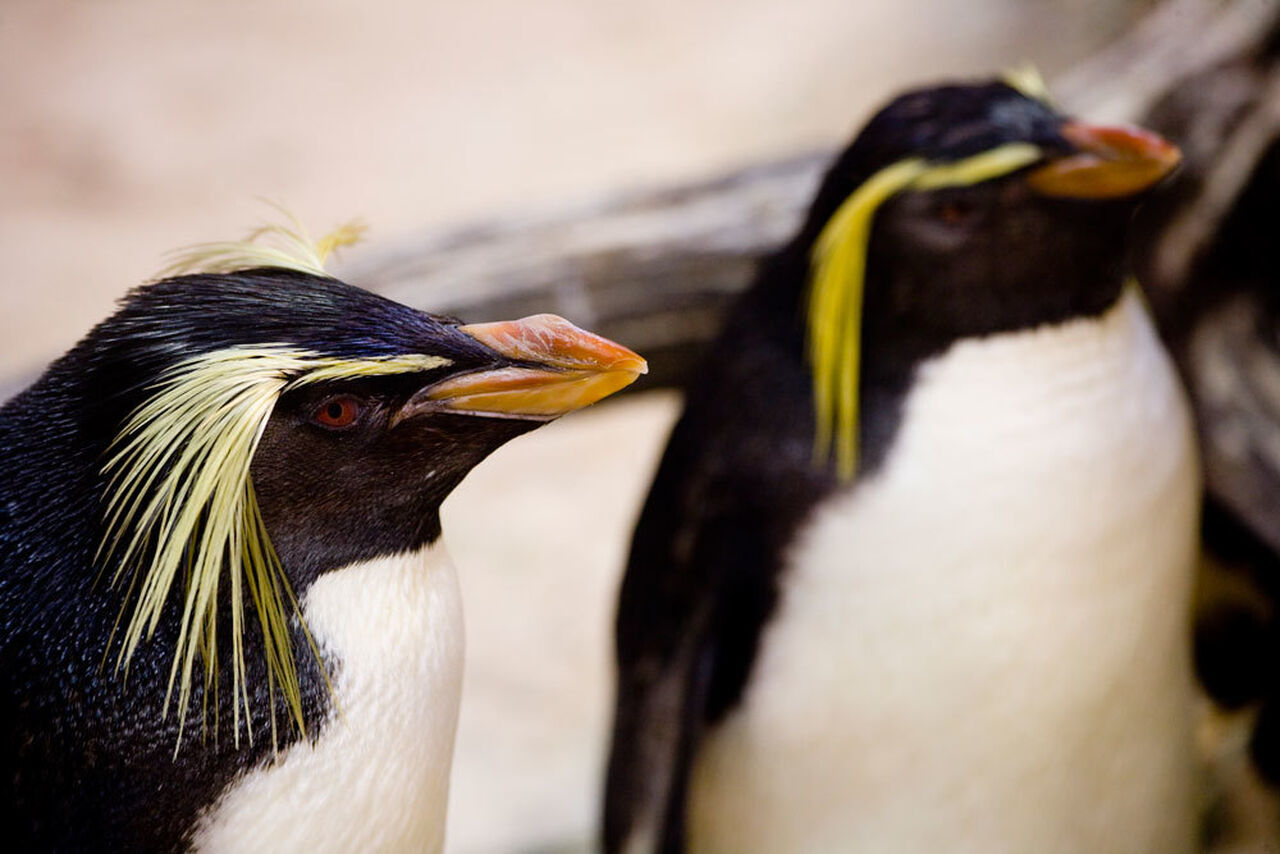Appearance and lifestyle:
Rockhopper penguins (Eudyptes moseleyi) are the smallest of the crested penguin species. Rockhopper penguins are black with a white belly and they have long bright yellow feathers which look like eyebrows that make them stand out. Their standing height is 47 to 60cm and they can weigh from 2.4 to 4.2 kg.
Rockhoppers lay two eggs and protect them aggressively. Parents take turns incubating the eggs, of which only one normally hatches. For up to 26 days after the chick has hatched, the male protects it while the female forages and brings back food for the chick. The rockhopper penguins in the aquarium were found stranded on southern Cape beaches and rehabilitated by the South African Foundation for the Conservation of Coastal Birds (SANCOB) before being donated to the aquarium. Unfortunately, they cannot be released because of the risk of introducing diseases into wild populations.
Rockhopper colonies are often relatively small compared to other penguin species, but what they lack in size, they make up for in noise. Fierce competition for nesting materials, mating partners, and territory all contribute to the cacophony at these sites. These birds also communicate by head shaking, head and flipper waving, bowing, gesturing and preening.
Habitat:
Northern rockhopper penguins breed on only seven islands in the South Atlantic and Indian Oceans. Most of the population occurs on Gough Island and the Tristan da Cunha group of islands.
Rockhopper penguins occur on islands thousands of kilometres south of South Africa. How did these small birds end up stranded on our coast?
The best explanation is that the penguins were caught by fishermen on large fishing vessels and kept on board as pets, to use as food or to sell on dry land. Having these birds in your possession once you enter South African waters is illegal. Worried about being fined, the fishermen sometimes toss the birds overboard. Passersby find the stranded birds and take them to SANCCOB. Once the penguins have been rehabilitated and nursed back to health, they are integrated into the existing rockhopper penguin colony here at the Two Oceans Aquarium.
Diet:
Rockhopper penguin's eat fish, krill, octopus, squid and crustaceans. They have a special tongue which has spines on it and on the top of its mouth, which keep food going in one direction: down the throat.
Threats:
Conservation Status: Endangered.
Penguin Encounters
Would you like to meet our rockhopper penguins up close? You can! Visit our Penguin Experience page for more info.
